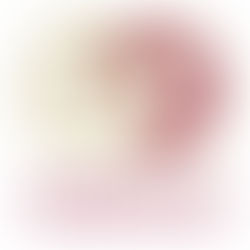Researching patterns: Iznik ceramics
It is about time to catch up and fill in the blanks of the work I've been doing over the summer months in order to preserve a continued narrative for my contextual diary required for my MA.
In about May/June my tutors suggested that it may worth my while to have a look at Iznik ceramics. I was just finishing off my research into geometric Islamic patterns and was looking for a new set of patterns to get into. Even though the Islamic geometric architectural patterns are highly sophisticated I found them quite difficult to adapt to my pottery. Their rigid geometry, which is based complicated mathematical proportions, does not lend itself to my organic forms. Thus, even though there are crossover areas Iznik floral and Islamic architectural geometric patterns I was hoping that Iznik patterns would offer me more freedom to adapt them to my needs.

A great start to my research was the wonderful book Iznik: The Artistry of Ottoman Ceramics by Walter B. Denny (London: 2015), which was given to me by one of my co-students, Pam (Thanks again). Not only is this book full of lovely illustrations but also full of historical information about the development of Iznik ceramics in the Ottoman empire. Fascinating. What interested me most was how artistic influences spread along trade routes Iznik ceramics were heavily influenced by blue and white Chinese porcelain. Not only did the potters in Iznik try to imitate the look by covering their pottery with a white slip decorated with blue decorations but they imitated the imagery as well, such as dragons and the stylised cloud pattern on the rims. Incidentally the rise of blue and white Chinese porcelain was only possible due to the cobalt pigments which came from the middle East.


The technological advances and artistic patronage during the golden age in the Ottoman empire (late 15th to middle 16th century) meant that Iznik pottery grew more sophisticated and developed its own distinctive style which included the use of luminous colours. This style was so successful that it became internationally very sought after and was imitated as far as Italy and Spain.
As is usual with my process of researching, I have copied some of the patterns into my sketchbook. Not only does this provide valued reference material but by copying the patterns themselves I get to 'understand' them better. Copying them forces you to have a proper look at them and makes you try to understand proportions and the interrelations of different pattern elements.

My very initial and superficial reaction to Iznik ceramics was not necessarily a positive one. All I saw was plates decorated with bright gaudy flowers with twirly rims. However, on closer inspection I found that there were some astonishingly modern looking ceramics, which didn't really look as old as nearly 500 years old.


Of course, you more you look the more you discover. I realised that Iznik ceramics do offer a lot for me aesthetically. Not everything though, I will pick and choose which elements appeal to me and use those. The floral centres depicting flowers such as carnations, tulips and pomegranates will probably not feature highly in my take on Iznik patterns as I prefer the more abstract elements.
This is an assembly of different patterns found on Iznik plates during my search on the internet:

These along with other images found will form the basis of my pattern library which I can reference when decorating my ceramics 'Iznik-style'. My intent is not to do modern copies but use these patterns in conjunction with other decoration styles and traditions to create something new. Thus, they my pieces may actually not be brightly patterned at all. I wonder whether the origins will still come through...

















